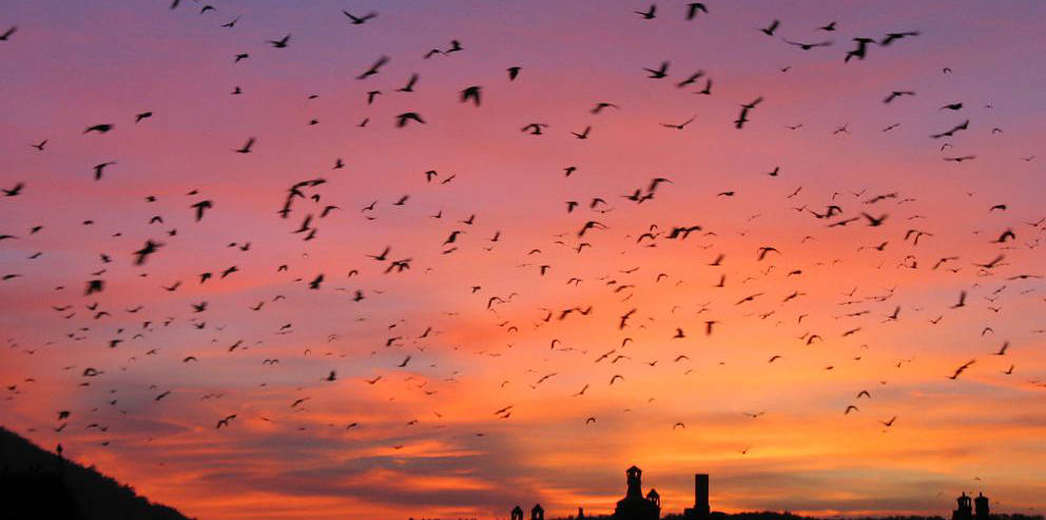About-France.com
- the connoisseur's guide to France
- Explore France ►
- Essential pages
- Travel in France
- Where to go
- What to see and do
A short guide to bird life in France
| On this page ► | Seabirds and waterfowl |
Birds of prey |
| Other notable birds | Bird sanctuaries |
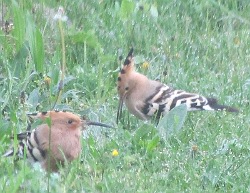 Hoopoes in the spring (Massif Central)
Hoopoes in the spring (Massif Central) There are estimated to be 460 varieties of birds in metropolitan France, which is less than the UK; but in terms of absolute numbers of birds, France is surely well ahead of the UK. Human population density in France is half that of the UK, and a quarter of that of England, leaving plenty of wide open spaces and natural environment favourable to bird life. There does not appear to be any estimate on the total average bird population in France today, but it is probably well over the 166 million estimated as the bird population of the the UK (State of the UK's birds report, 2012).
Reports suggest that bird populations have continued to decline in many regions of France (as in most parts of the world) since the start of the 21st century, notably in Mediterranean areas and the agricultural regions of the southwest; but in the sparsely populated uplands of the Massif Central, bird populations are generally on the increase. (Ministry of Ecology statistics 2009 - in French)
Seabirds
With its rugged cliffs and extensive coastline, Brittany is the region of France that is most interesting in terms of seabirds. But the Atlantic coast of France between the Loire and the Garonne, with its salt marshes, its fishing industries, its oysterbeds and its wetlands, is generally a rich area for sea and coastal birds. The coasts of Normandy and Picardy are also home to large numbers of seabirds, notably on the Cotentin Peninsula and the Baie de Somme.Waders and waterfowl
The Baie de Somme is one of the significant wetland areas of France, attracting large numbers of sedentary and migrating waders and waterfowl. France has several other major wetland areas with interesting birdlife, most notably the Camargue and the Lac de Grandlieu reserve south of Nantes - but also inland wetlands or lake areas such as the Brenne, the Bresse and the Lac du Der in Champagne.Two species of waterbird in particular have seen a dramatic increase in numbers in the last thirty years, grey herons and cormorants. Once fairly rare, both are now ubiquitous on France's rivers and lakes, to the point where they are in some cases threatening local ecosystems.
Birds of prey
 Short-toed eagle in the Massif
Central
Short-toed eagle in the Massif
Central Among the most spectacular birds to see in France are the massive griffon vultures that have been reintroduced in the Alps and southern Massif Central (Tarn gorge area). There are now close to 1000 of these huge birds of prey in central southern France, and they are starting to migrate north into the Auvergne. See below for best bird-watching areas in France.
Lammergeiers, (gypaète barbu) another type of vulture, can be seen in some parts of the Pyrenees, and are being reintroduced into the Alps and in the southern Massif Central. Their numbers are low, but increasing.
France is home to 40% of the short-toed eagles (circaète Jean le Blanc) of Western Europe, with the largest populations in the Massif Central.
Other raptors increasingly common in France are hen harriers, Montagu's harriers, marsh harriers, most types of European falcon, buzzards and honey buzzards, red kites and black kites and eagle owls - among others.
With its rocky terrain, extensive woodlands, moors, sparse human population and medium altitude (500 - 1500 metres), the Massif Central (Auvergne, Limousin, Lozère, Aveyron) is the richest part of France for observing birds of prey.
Other notable birds in France
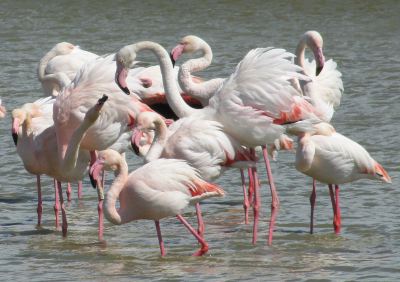 Pink flamingoes in the Camargue
Pink flamingoes in the Camargue
Capercaillies (le grand téras) can be seen in several massifs in France, notably the Pyrenees, the Cévennes and the Jura. But France is also home to many other types of birds, and depending on the location, bird watchers may well catch a glimpse of hoopoes, shrikes, different varieties of woodpecker, egrets, plus a good variety of finches, buntings and many other smaller birds.
Nine major bird sanctuaries and areas
 Best bird-watching areas
in France (pale) and major bird sanctuaries or sites (pink)
Best bird-watching areas
in France (pale) and major bird sanctuaries or sites (pink)
- the Baie de Somme wetlands at the mouth of the Somme, in Picardy,
- the Lac du Der in Champagne, eastern France, (migrating birds, in particular cranes),
- Lac de Grandlieu nature reserve, south of Nantes (Pays de la Loire). Waterfowl, migrants. The second greatest bird area in France after the Camargue, in terms of numbers of species.
- the Brenne regional park in the Centre region, southeast of Tours
- the Dombes wildlife reserve and centre in the Ain, north of Lyon, (waders and water birds),
- the Haut Allier area in the Haute Loire department, south of Clermont-Ferrand in the Auvergne (raptors, eagles and many smaller birds),
- the Tarn Gorge in the Aveyron / Lozere area of the southern Massif Central (raptors, vultures),
- the Teich bird reserve near Arcachon, southwest of Bordeaux (Aquitaine), (ducks and geese),
- The Camargue wetlands on the Mediterranean coast, with their ornithological reserve (flamingoes, waders, migrating birds)
 Riding
across the Camargue wetlands
Riding
across the Camargue wetlands Going further:
- Off the beaten track - undiscovered France
- information and a map of France's long-distance footpaths
- Camping in France
- The Massif Central
- The Pyrenees,
- The best of rural France - Eight rural departments away from the tourist hordes
- Undiscovered Spain
About-France.com
Home
page - Site
search
- Regions
- Maps of France
- Contact
Photo
above. Rooks at sunset.
Copyright © About-France.com
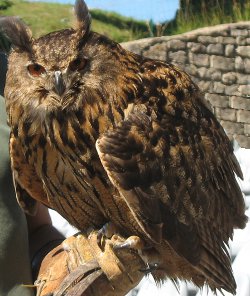
Eagle owls (in French, grands ducs) are rare, but their numbers are increasing

The bright yellow Serin, quite common in southern France
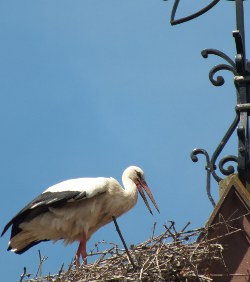
Nesting stork, Alsace.
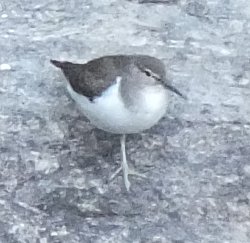
Sandpiper on the river Allier
Gites in Auvergne & the Massif Central
The text and photos on this page are copyright About-France.com
Copyright © About-France.com
While
many bird populations have declined in recent years in France, other
species have seen their numbers rise, thanks to increased
protection, increasing areas of uncultivated scrubland and woodland,
less use of pesticides in many areas, programmes of reintroduction, and
a falling number of hunters.

Eagle owls (in French, grands ducs) are rare, but their numbers are increasing

The bright yellow Serin, quite common in southern France

Nesting stork, Alsace.

Sandpiper on the river Allier
Accommodation in
France
Gites in Auvergne & the Massif Central
The text and photos on this page are copyright About-France.com

